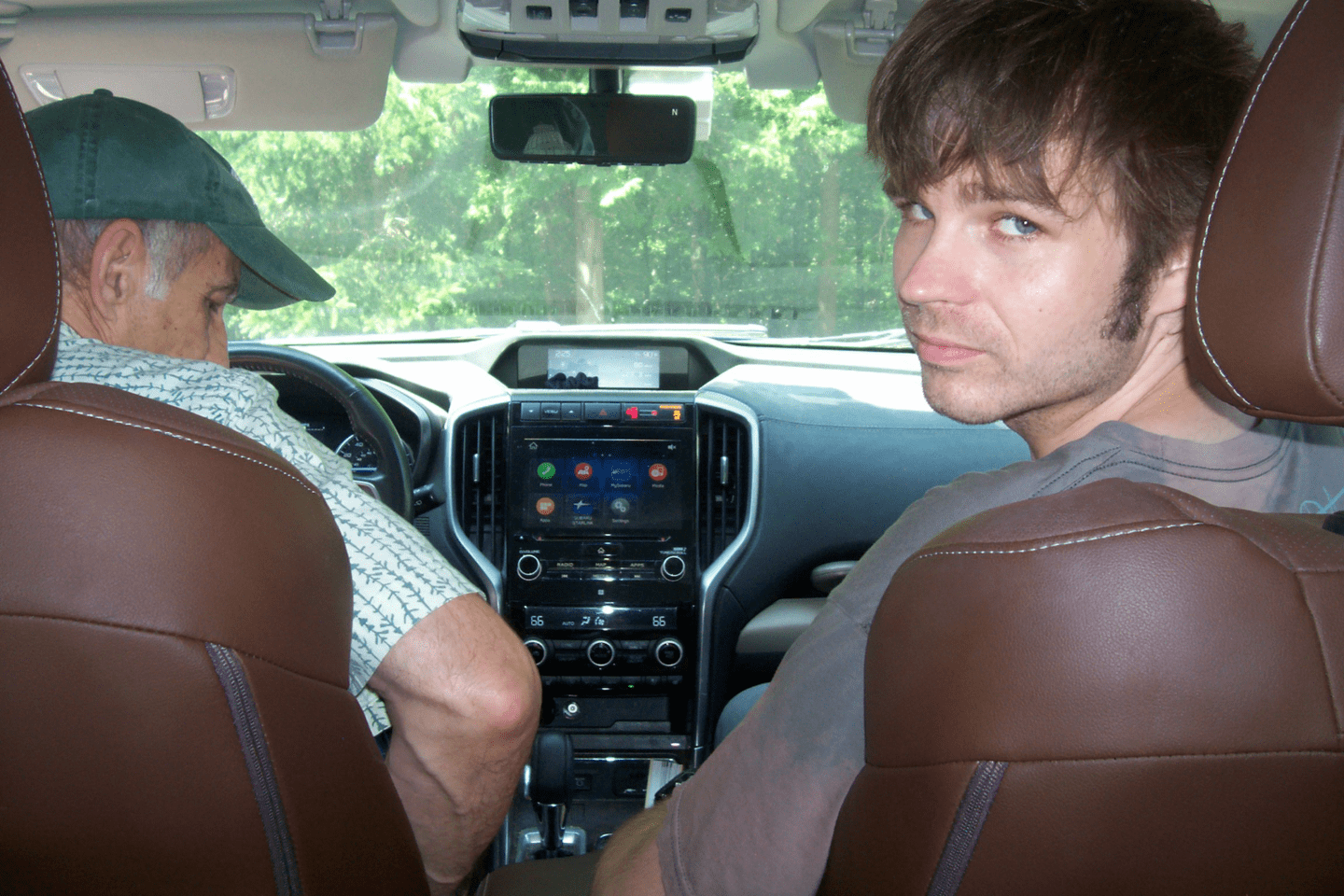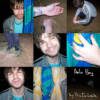Nate Amos has always charted his own path. Whether it’s the candid charm of This Is Lorelei or the idiosyncratic chic of Water From Your Eyes, the New York City-based singer-songwriter has a knack for contorting the familiar into something new. But guitar pop isn’t the only thing he’s refashioned in his own image. After the breakout indie success of Box for Buddy, Box for Star, his quasi-debut album as This Is Lorelei, Amos rethought the typical album format altogether. The result is This Is Lorelei’s sort-of-second sort-of-album, Holo Boy—neither a retrospective compilation, nor a traditionally new LP, but an undeniable reaffirmation of Amos’ past and present talents.
Heartening, tuneful, and playful as ever, Holo Boy’s songs were sourced from This Is Lorelei’s sprawling back catalog and re-recorded in May 2025. With more ears on his work now, Amos was excited by the idea of a release that would encourage new fans to delve deeper into his discography and allow him to revisit past songs of personal significance. Its mellifluous acoustic strums and breezy, thrumming electric guitar lines exude a summery, carefree glow and anchor a rather ambitious tracklist. “The songs on Box for Buddy, Box for Star are really similar, and they’re produced in such a way that the differences are accentuated, whereas with this album, the songs are really different, but they’re produced in such a way that the commonalities are accentuated,” Amos says.
It’s been a whirlwind couple of years for Amos. This Is Lorelei performed for sold-out crowds across the country, including 1,200 people at New York City’s Knockdown Center—the biggest headline show Amos has played with any of his projects—and embarked on its first European headline tour. Plus, indie darlings MJ Lenderman and Snail Mail teamed up with Amos to record their own versions of Box for Buddy, Box for Star tracks—“Dancing in the Club” and “Two Legs,” respectively. More recently, Waxahatchee also hopped on the Box for Buddy, Box for Star covers train, performing “Where’s Your Love Now” at her live shows. Amos even jokes that showgoers seem to know his lyrics better than he does. Considering that, for the better part of This Is Lorelei’s decade-plus run, it was an insular songwriting exercise, with albums and EPs serving as quietly self-released showcases of his inspired experiments, it’s an understatement to suggest that Amos didn’t think he’d get this far.
Holo Boy features 10 re-recorded versions of songs written from 2014 to 2021, collected from nine different This Is Lorelei releases. With hundreds of tracks to choose from, Amos elected not to treat this LP as a best-of, or to spend hours listening back, but instead to pick interesting songs from a long span that are special to him. “I tried to look at the catalog as little as possible and more just think to myself, ‘What are songs from the past that I feel like are good songs, demonstrate growth, and are significant to me, in terms of embodying a certain period of time?’” Amos says.
The album was sequenced intentionally and conceptualized as its own distinct work, but it was recorded quickly and instinctively to honor the straight-to-Bandcamp spirit of the original songs and to have an accurate document of This Is Lorelei in 2025. With the exception of live drums, Amos recorded Holo Boy in a closet-sized room in his Bed-Stuy apartment. “It was very claustrophobic, there was no air conditioning, and I couldn’t spin in my chair without potentially knocking over a guitar,” Amos recalls. “I worked on a desk made out of rough plywood with just one pair of speakers and a slightly broken interface—a very minimal setup. And I worked on it for 16 hours a day until it was pretty much done.”
If Box for Buddy, Box for Star was his most vulnerable and earnest musical endeavor yet, to some degree, the stakes feel higher with Holo Boy—after all, the only thing more vulnerable than sharing your current self with the world is sharing your past selves. For Amos, the process of revisiting these characters was a humorous and emotional one. “There were a couple of songs where my initial reaction was like, ‘Oh, little Nate, this is adorable,’” Amos says. “But some of the songs, I listen to and I’m like, ‘Wow, this is such a growing pain song,’ and then there are certain songs where I’m like, ‘Jesus Christ, I’m glad I’m out of there.’”
The themes that underpin these songs and the album format itself challenge conventional understandings of time. So it’s no surprise that Amos views Holo Boy as more of a prequel, sister album, or even shadow self to Box for Buddy, Box for Star, rather than a follow-up. The title, Holo Boy, is actually a reference to a holodeck from Star Trek, a device used to project realistic simulations—a concept he often ponders. But whether we exist on a floating rock in space or are living out an artificially constructed reality, Amos will undoubtedly continue shapeshifting to beautiful effect and amusing himself in the process—and for an artist like him, that’s just a Tuesday.



